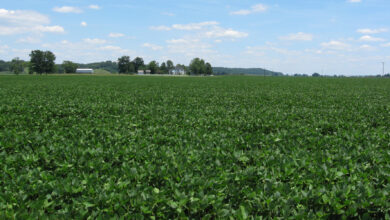More than 70% of critical minerals key for the net zero energy transition at risk from climate disruption

Essential commodities face heightened exposure to drought and heat risk
Critical Minerals
By 2050, even if the world sharply reduces its carbon emissions, over 70% of cobalt and lithium production could face significant, high, or extreme drought risk – up from near zero today. Less than 10% of copper production faces significant or greater drought risk today, rising to over half in a 2050 low emissions scenario and over 70% in a high emissions scenario. Cobalt, copper and lithium are integral to electronics and clean-energy technologies.
Key Crops
All three crops (wheat, rice, maize) face growing risks from both heat stress and drought. Taken together, these three crops account for 42% of the calories people eat. The most widespread and serious risk is to rice, around 90% of which will face significant or greater heat stress risk by 2050 in a high emissions scenario. Currently, over 75% of rice is grown in conditions of significant or greater heat risk, showing that it is not just the level of risk that matters, but also how well producers are prepared to adapt. Drought risk is also increasing sharply for key crops. Currently, around 1% of maize and wheat face significant drought risk, rising to more than 30% and 50% respectively in a 2050 high emissions scenario.
Vital Metals
PwC research finds that vital metals face increasing amounts of risk. In particular, over 60% of the world’s bauxite and iron production may face significant or greater heat stress risk by 2050, even in a low emissions scenario (up from 30-50% currently). In a high emissions scenario in 2050, 40% of the world’s zinc production may face significant or greater drought risk (up from zero significant drought risk currently). Aluminium (from bauxite), iron and zinc are widely used in manufacturing, transport, and infrastructure.
Production of all nine critical commodities is also concentrated in a limited number of countries – many of which face increasing climate risks. For each resource, at least 40% – and as much as 85% – of its global supply is produced from a distinct set of no more than three countries.




